Similarity - Theory |
Go to practice - Spanish Version
A scale model is a representation of, for instance, a building or a vehicle that is smaller or bigger than the real size of the original. If it has been made properly, the shapes are alike; only the dimensions change. To express how small -or big- he model is in comparison with the original, we use scales.
A scale is just a ratio. For example, if we were given an Eiffel Tower scale model whose scale is 1:3000, we would have a model which is 3000 times smaller than the actual size of the Tower, and viceversa.
Thales of Miluetus, a greek mathematician, discovered an interesting property of triangles: if we draw a line parallel to any of the sides, we would obtain another triangle, which would be a different size, but its shape would be equal to the one of the original triangle. In other words: the sides change, but not the angles. In fact, we have multiplied all sides by the same number, k. We began having a, b, c (red triangle), but now we have k·a, k·b, k·c (black triangle). At this point, we can prove that the segments of the original triangle are proportional to the black one: |
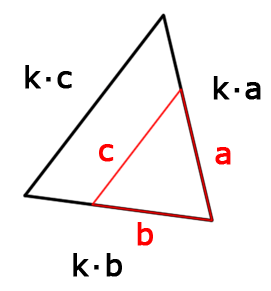 |
 |
At this moment, we will name the secondary segments a', b' and c'. We can deduce the equality shown on the right from the previous paragraph. This is Thale's Thorem: every line parallel to the side of a triangle creates with the other two sides a new triangle, whose sides are proportional the the ones of the original triangle. |
 |
If we met two triangles, how could we know if they are similar? If they fulfill some of these conditions:
|
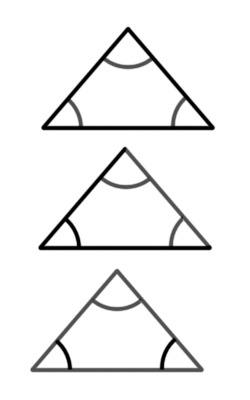 |
In the case of rectangle triangles, they are similar if, at last, they have a common angle (because we already know the right one). Two very useful consequences of this characteristic are
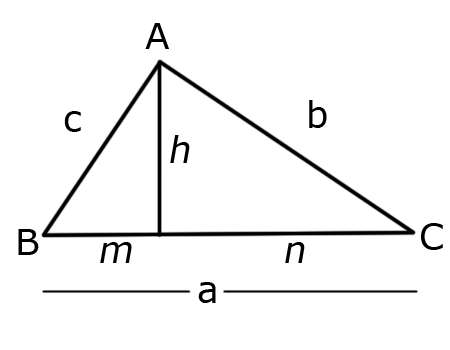 |
Let's consider a triangle (right angle A), and draw the the altitude of the hypotenuse (a). We can see that we have split the hypotenuse into two segments, m and n. Apart from that, we have split the original triangle into two smaller ones, which have a special feature: they are similar. In the next animation we can see a visual proof to the fact that, if two rectangle triangles have at least a common angle, they are similar: |
 |
Owing to their proportionality, we can assume the next equality, which is known as theorem of the altitude: in a rectangle triangle, the squared altitude of the hypotenuse equals the multiplication of the orthogonal projections of the cathetus over the hypotenuse. |
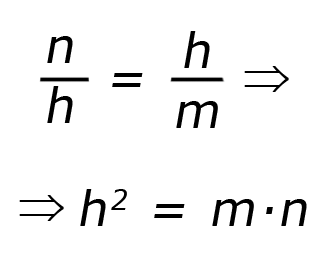 |
When we divided the triangle, we created two similar triangles, that are also similar to the original. In the animation shown on the right we take one of the small triangles, we turn it over, and we will realize that they are similar.
|
 |
Now, we can see that the equality on the right is right. This also happens with the other cathetus, with the formula
This is known as theorem of the cathetus: in a rectangle triangle, the squared cathetus equals the multiplication of the hypotenuse by its othogonal projection over the hypotenuse. |
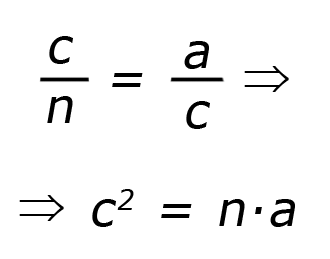 |